Your gear will be illegal soon — but PFAS-free apparel and shoes are here
Content is created by CNN Underscored’s team of editors who work independently from the CNN newsroom. When you buy through links on our site, CNN and its syndication partners may earn a commission. Learn more
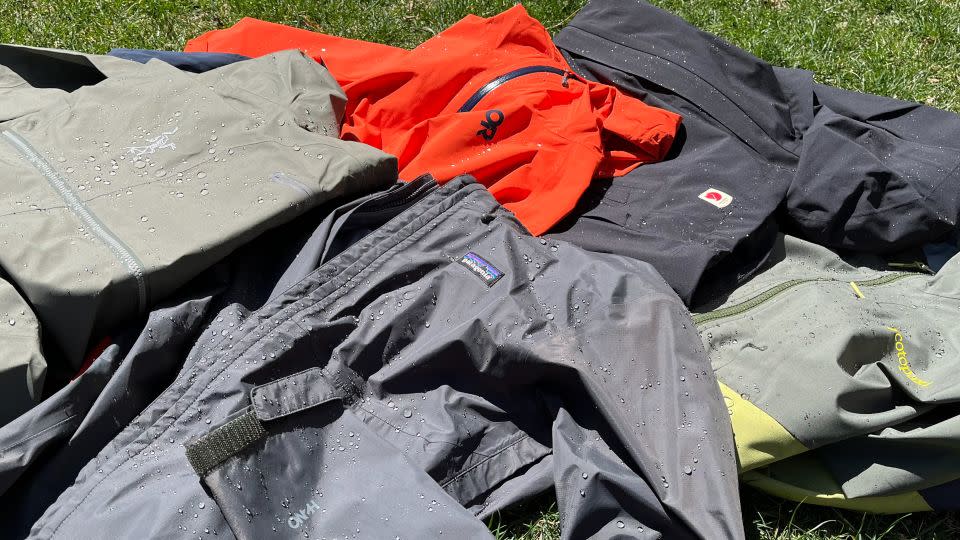
This article is a part of CNN Underscored’s Earth Week, a weeklong focus on our planet and ways to celebrate and preserve it. We’ll be featuring tips on how to live more sustainably, products to help you spend more time in nature and exclusive deals all week, so check in every morning to see what’s new and be sure to subscribe to the CNN Underscored newsletter to see it all.
When we go hiking or skiing, we’re reliant upon our gear to protect us from the big, bad elements Mother Nature throws our way. And up until recently, a large component of these bombproof protections were some very toxic chemicals known as PFAS, or forever chemicals. Your favorite rain jacket, your trusty ski kit, your impermeable backpacking tent — it doesn’t matter. They’re all likely swimming in PFAS.
“PFAS, or per- and polyfluoroalkyl substances, are a group of chemicals initially developed in the 1930s,” says Kyle Postmus, the global senior manager at the National Science Foundation (NSF). “Their popularity came from their nonstick, heat-resistant and waterproofing abilities, gaining traction in industries that manufacture clothing, cookware, firefighting foams, housing materials and more.”
People quickly realized PFAS are good at what they do, so they slapped ’em on everything. In the outdoor industry, PFAS have been our go-to waterproof chemicals for apparel and equipment, but they also can be found in everything from makeup and tampons to stain-resistant carpet and pizza boxes.
But not for long. Beginning in 2025, California is banning PFAS in all textiles. According to Safer States, a national alliance of environmental health organizations, at least 36 states are considering more than 450 bills on toxic chemical-related policies, suggesting that even more forever chemical bans are on the way. Beginning in the fall of 2024, outdoor retailer REI Co-op will only sell cookware and many textile products (like clothes, footwear and backpacks) that have no PFAS.
It’s clear that we’re moving away from PFAS on a global scale. But why?
What is the problem with PFAS?
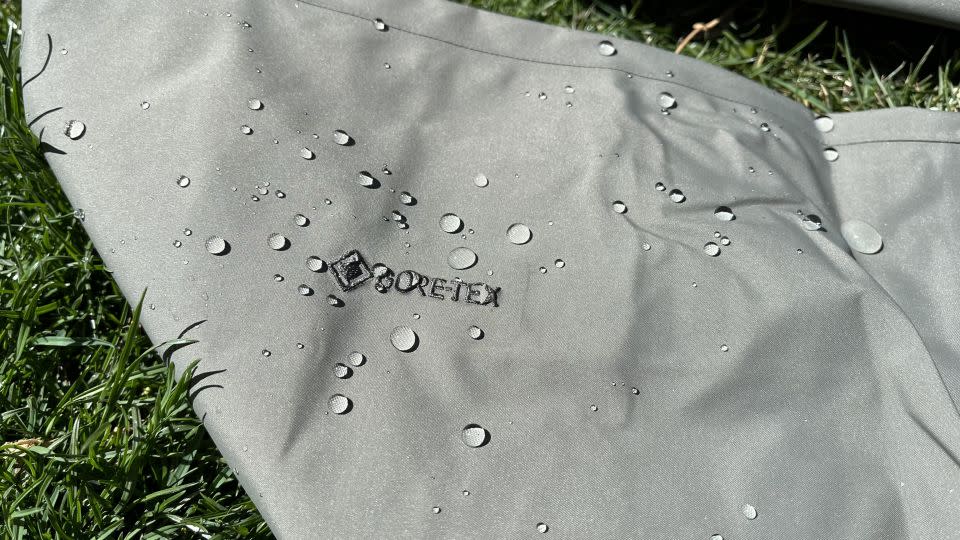
At this point, we’re literally wading through PFAS. According to Dr. Carrie McDonough, an assistant professor of chemistry at Carnegie Mellon University, carbon-fluorine has an especially strong bond. “For the most part, they don’t break down on a geologic time scale,” she says, noting that they can theoretically stick around forever — hence the nickname.
But this persistence is exactly what poses a problem for us, especially when we don’t fully understand how these compounds interact with living things. University of Rochester researcher Donald Taves first discovered a second type of fluoride in his own blood in 1968, which was our first inkling that there was a problem. But we didn’t realize the enormity of the situation for decades. McDonough explains that perfluoroalkyl acids are anions, which are different from most commonly studied pollutants that we often hear about. This means water treatment facilities are equipped to remove other pollutants from our water but not PFAS.
“They can basically hijack the water cycle and move with the groundwater,” McDonough says. “They’re much more mobile in water and less likely to be removed by simple filtration water treatment processes.”
This is problematic because our groundwater supplies our public’s drinking water. And according to the Center for Disease Control and Prevention, we’ve all got a bit of PFAS floating around inside us. It’s gross and also potentially scary. Postmus notes that PFAS have been linked to kidney disease, cancer, immune disruption and reproductive harm — to name a few. And the Environmental Protection Agency (EPA) is now calling some of these compounds likely carcinogenic to humans.
PFAS are so pervasive, in fact, that recent data shows popular hiking areas covered in the compounds. A 2021 study showed an accumulation of PFAS on the top of the world: Chomolungma, or Mount Everest. The report indicates that gear left behind on the big mountain — food packaging, fixed ropes and old tents — was the likely cause.
What this means for your outdoor gear
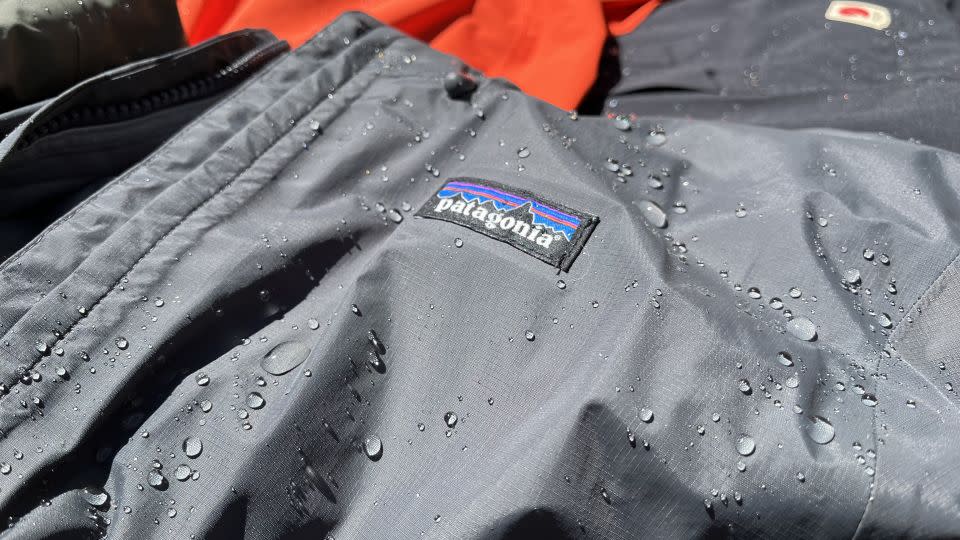
That’s not great news, and it’s easy to understand why outdoor brands and policies alike are moving away from these forever chemicals. But PFAS are really good at what they do. Does this mean our future outdoor adventures will come with a side of saturated and soaking wet?
Fortunately, no. This is a problem that many outdoor brands like Keen, Kari Traa, Picture Organic, Patagonia, Deuter, Jack Wolfskin and Fjallraven saw coming for years. Keen has been PFAS-free since 2018 and Jack Wolfskin began its phaseout in 2012, with plans to be PFAS-free by 2025.
In reality, finding alternatives for waterproofing alone hasn’t been too difficult. Case in point: Nikwax, a company that makes at-home waterproofing and cleaning solutions for your gear, has never once used PFAS since its inception in 1977. “We created our own means of producing water repellency without PFAS,” says Heidi Allen, the vice president of marketing. But there are other benefits of PFAS aside from water repellency.
Nordic brand Kari Traa completed its phaseout of PFAS in 2013 after reading the research about the adverse effects of forever chemicals. But it wasn’t easy. “There are limitations,” says Rebecca Johannson, ESG (environmental, social and corporate governance) and fabrics manager at Kari Traa. “Maintaining smooth repulsion with water … is achievable, but dealing with oil … poses more difficulties.”
Kaytlin Moeller is the regional sustainability manager at Fenix Outdoor North America, the parent company to Fjallraven, Hanwag and Royal Robbins. According to Moeller, phasing out PFAS isn’t as easy as it looks since there are so many proverbial cooks in the kitchen. “Cross-contamination during manufacturing is a huge challenge,” she says. “There is always a risk that a product made without PFAS could come into contact with contaminated machinery, groundwater or other PFAS-treated products.”
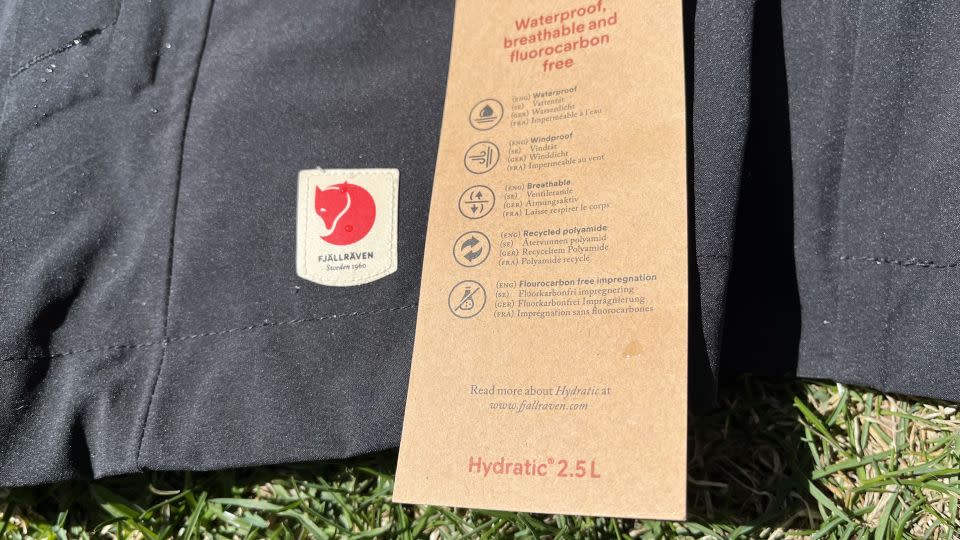
Ultimately, taking good care of your gear is going to be the best way forward. “Proper care will not only improve the performance and functionality of the garment but it will also extend a product’s lifespan and reduce its overall environmental impact,” says Sandy Flint, senior materials manager for Stio.
And according to Tae Hillyer, the owner of gear repair store San Juan Sewing, the best way to do that is Nikwax. “Use water-based waterproofing products like Nikwax,” he says. “They are PFAS-free and sell product at most outdoor gear shops.”
Best PFAS-free clothes and shoes
That’s a lot of heavy news but not all is lost. Postmus explains that the NSF first started certifying drinking water treatment products for the reduction of PFAS in 2017. And, if finalized, the EPA has proposed a rule that will establish legally enforceable limits on certain PFAS in drinking water. It’s a start.
But cutting PFAS out of the supply chain moving forward is one of the best things we can do, so these upcoming statewide regulations are a positive shift. And fortunately, there are many PFAS-free alternatives already on the market. If you’re in search of outdoor gear but want to minimize your impact, consider any of the PFAS-free products below.
Arc'teryx Women's Beta Lightweight Jacket
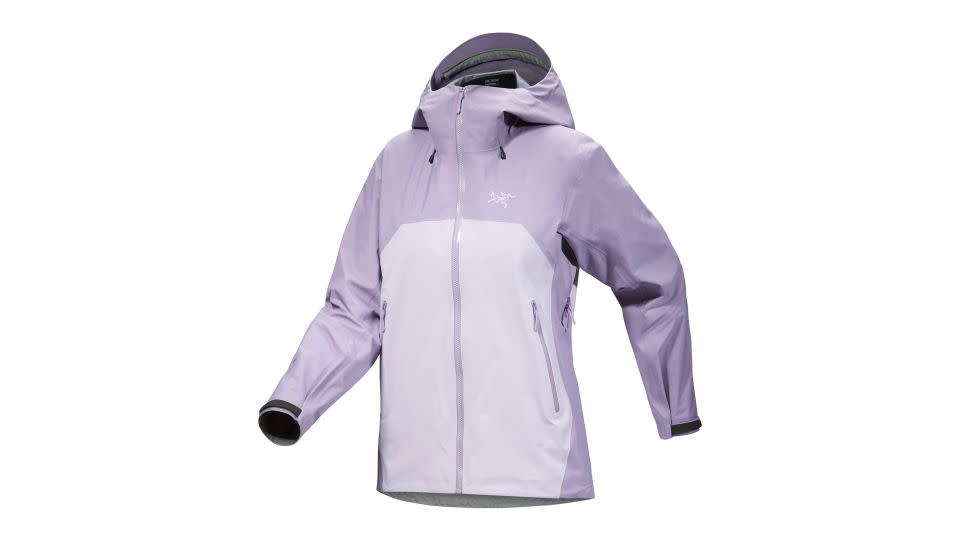
The Beta Lightweight jacket has been one of the brand’s most iconic products for some years, but it just got better. Now, the Beta Lightweight is constructed with Gore-Tex’s new ePE, the supplier’s first PFAS-free membrane.
Arc’teryx Men's Beta LT Jacket

Performance isn’t sacrificed with this new redesign. The updated Beta Lightweight met or exceeded all Arc’teryx’s performance benchmarks. And it’s still feather-light, easy to pack and very comfortable, thanks to a softer C-knit backing.
Jack Wolfskin Everquest Texapore Women’s Mid Boots
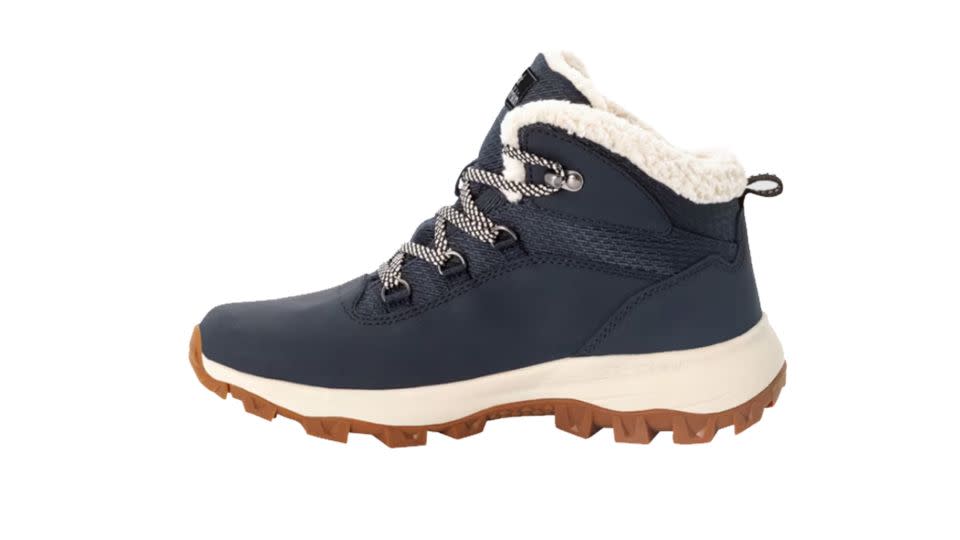
Based on our testing, we can tell you one thing: These boots are warm. Thanks to the brand’s proprietary insulation, these boots are rated as low as -22 degrees Fahrenheit. We can’t say that we’ve gone that low, but our tootsies were sweating with temps around 20 degrees Fahrenheit.
Jack Wolfskin Everquest Texapore Men’s Mid Boots
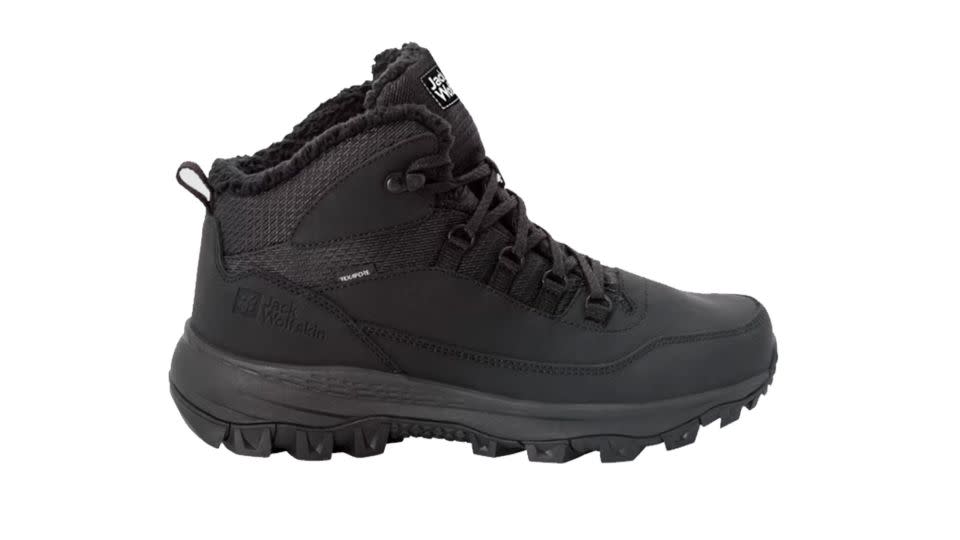
Not only is the waterproof Texapore Ecosphere membrane PFAS-free but it’s also made from fully recycled materials. These come from the cutting waste derived from manufacturing, as well as recycled plastic bottles.
Nemo Mayfly Osmo Tent
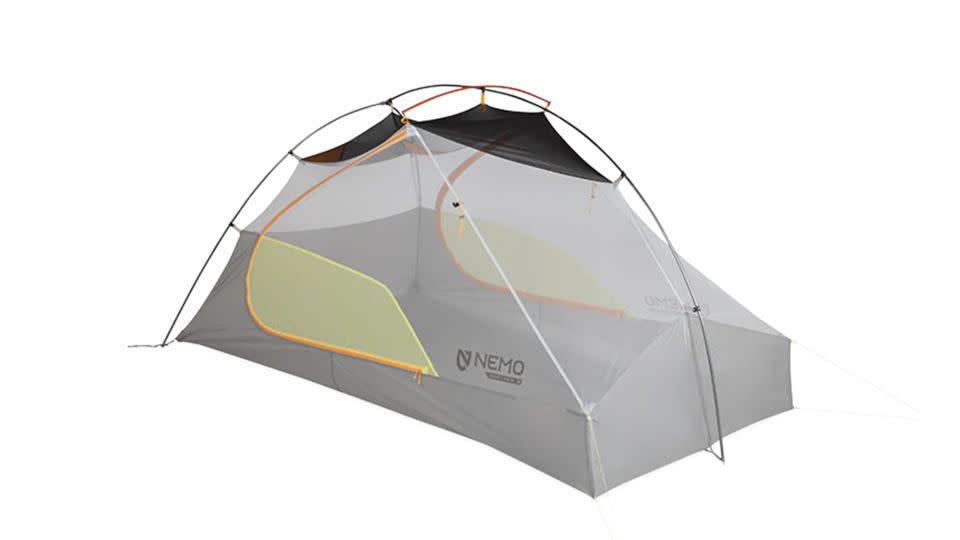
Available in both a two-person and three-person model, the Mayfly Osmo is made from 100% recycled polyester and nylon yarns — which makes it sag much less than a standard nylon tent when it’s wet. Nemo used PFAS-free waterproofing, and the two-person tent still clocks in at a manageable 3-pound minimum weight.
Nemo Women’s Riff Sleeping Bag
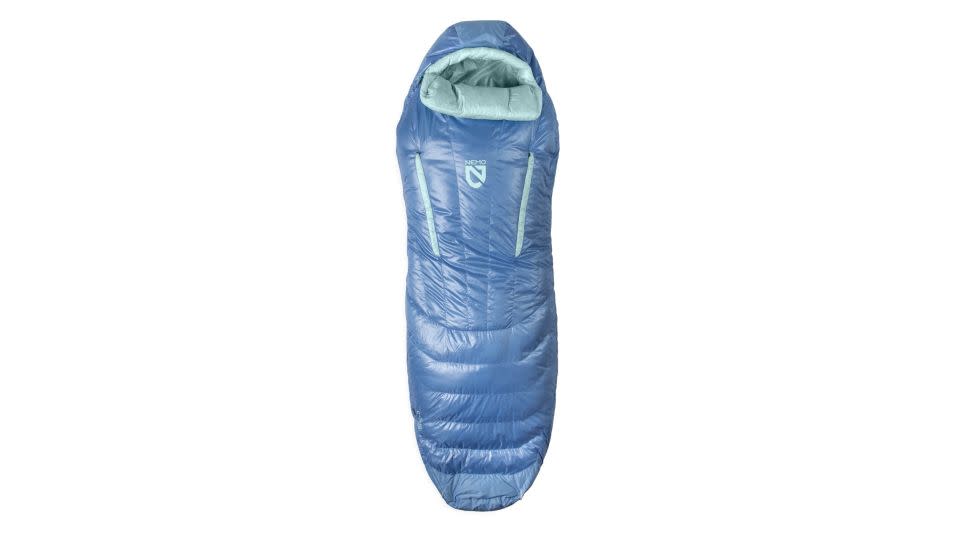
Wanna spoon? Nemo’s 15-degree Fahrenheit Riff sleeping bag uses the brand’s classic spoon shape — added width at the knees and elbows for side sleepers — but trims down at the feet and shoulders to save on weight and packability.
Nemo Men’s Riff Sleeping Bag
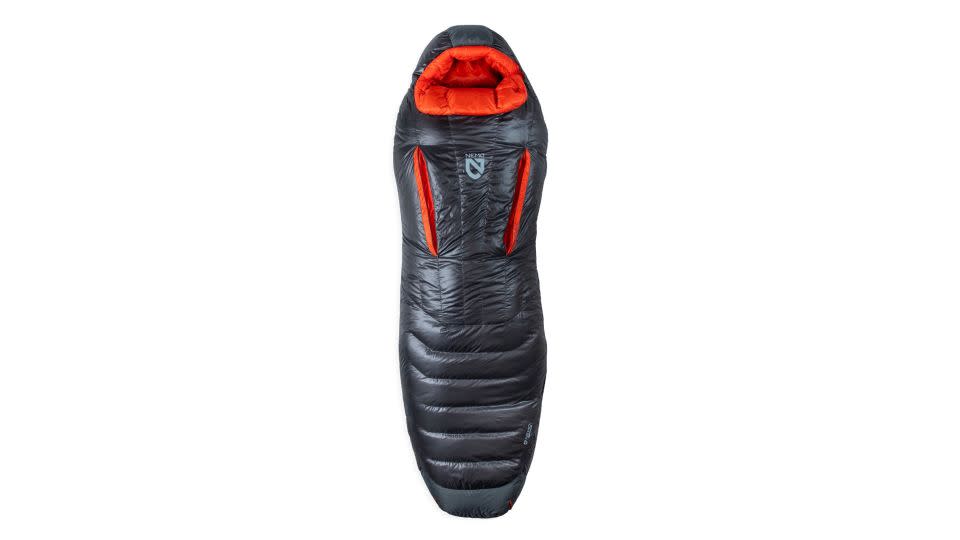
Vents on the chest offer a little added breathability, and a combination of carefully placed vertical and horizontal baffles insulate and prevent down migration. The Riff is also available in a 30-degree Fahrenheit option.
Fjallraven Keb Eco-Shell Women’s Jacket
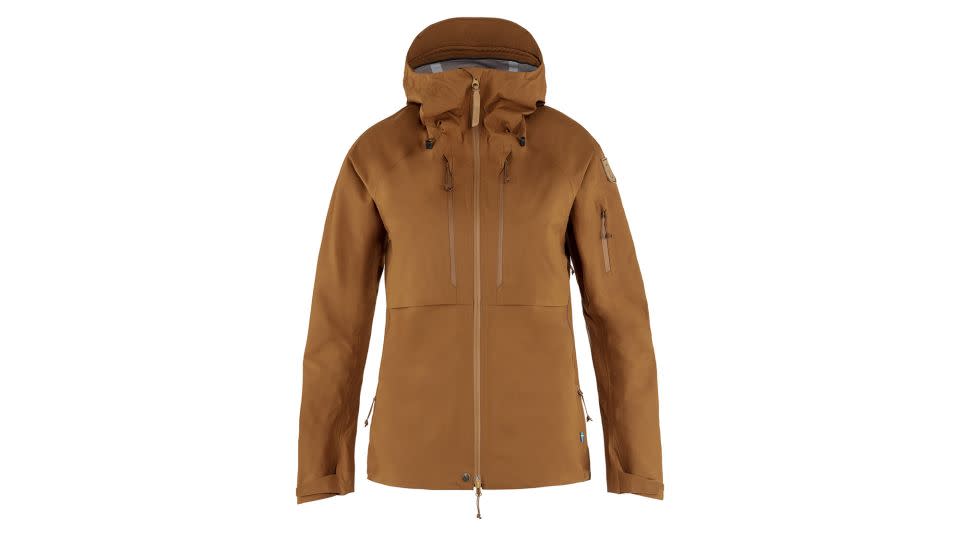
This three-layer shell moves with your body and easily bends at the elbows and waist as you go about your trail time. As with many European brands, the Keb Eco-Shell runs a touch trim, so if you’re between sizes, go up.
Fjallraven Keb Eco-Shell Men’s Jacket
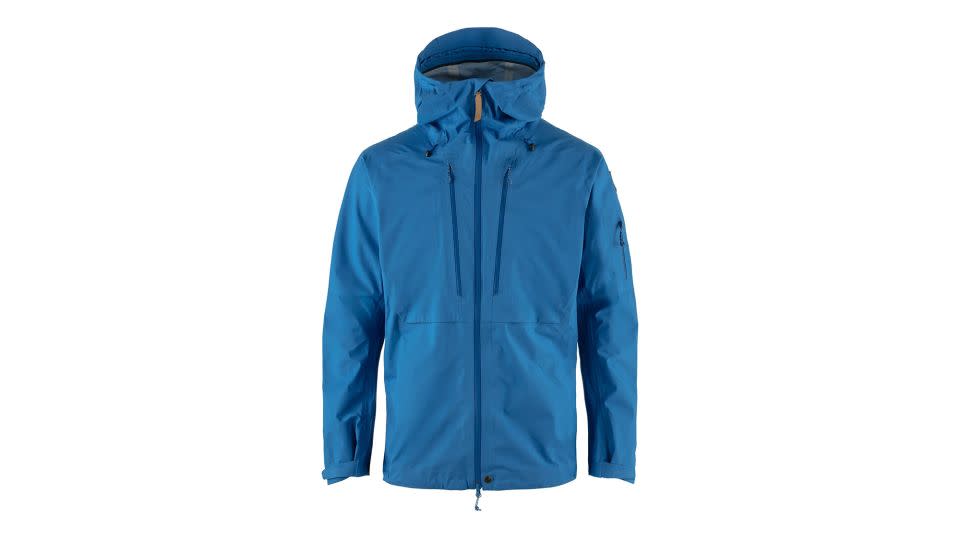
Two massive chest pockets stash plenty of sundries like lip balm and snacks. A pair of vertical vents with two-way zippers sit in place of traditional hand pockets. Keep this in mind — we accidentally threw our car keys on the ground.
Mammut Haldigrat HS Hooded Women’s Jacket
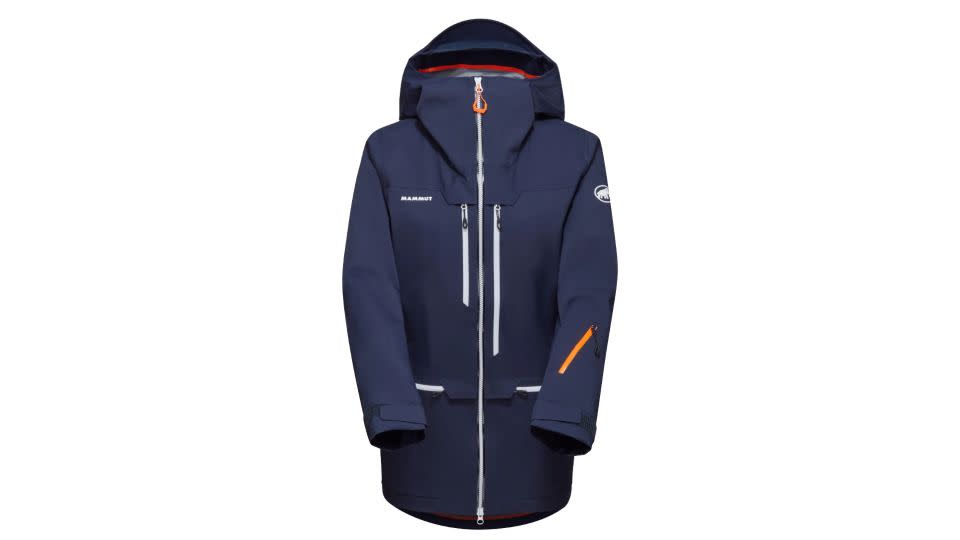
The Haldigrat is a favorite of skiers everywhere, and for good reason. It’s light enough for any backcountry climbing yet it’s still protective and burly enough for those resort skiing days when the snow just won’t stop.
Mammut Haldigrat HS Hooded Men’s Jacket
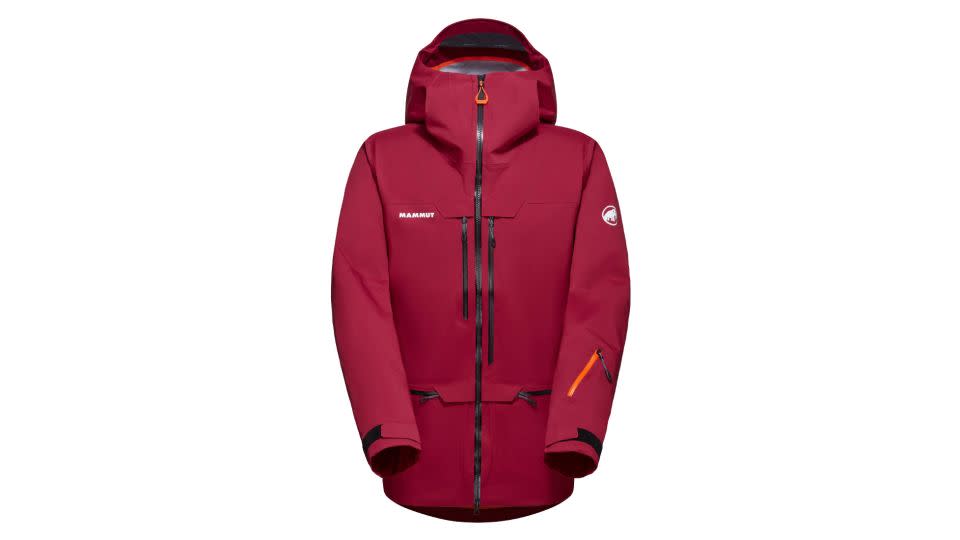
Made with post-consumer recycled nylon and a PFAS-free waterproof membrane, the Haldigrat is easier on the planet. Added bonus: The fabric has a soft touch, so it won’t feel crunchy against your chin or make weird crackling sounds when you walk.
Nikwax Hard-Shell Outerwear Care Kit
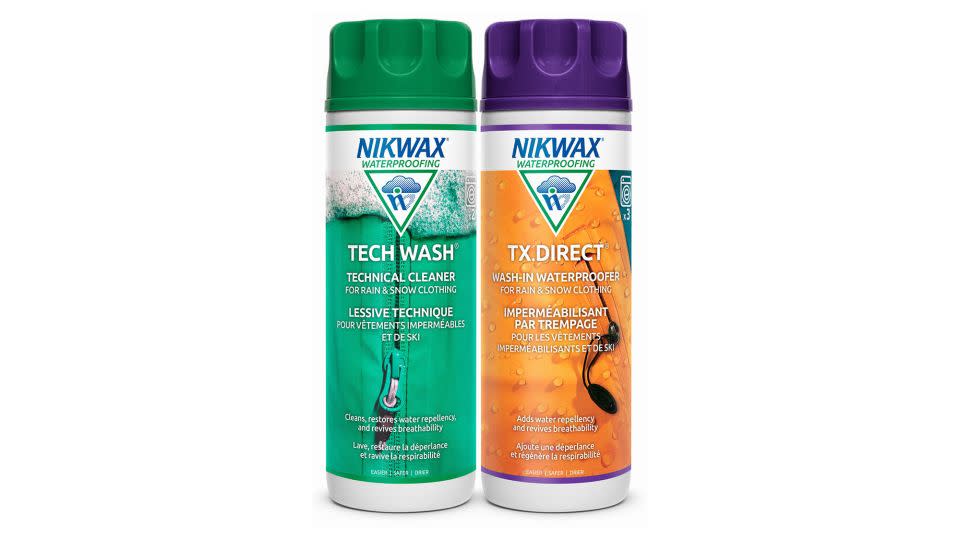
If you’re not quite sure how to care for all your PFAS-free gear, we suggest this duo. Designed for hard shells, the Nikwax Outerwear kit includes products to safely wash and re-waterproof your favorite rain jackets or ski kits. Plus, it’s easy to use; it can all be done in your washing machine.
Kari Traa Ragnhild Women’s Ski Jacket

As a former Olympian herself, Kari Traa wanted products that performed well and looked good. That’s the secret with the Ragnhild ski jacket. Made with recycled polyester and PFAS-free waterproofing, and packed with synthetic insulation, this jacket rips with you but still looks cute enough for après.
Stio Doublecharge Insulated Men’s Ski Pants
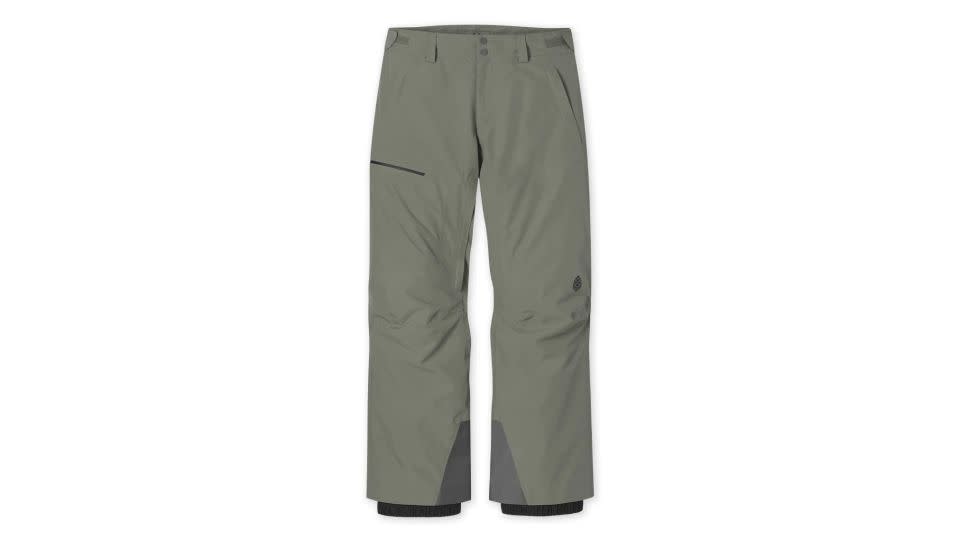
For skiers who shred inbounds and want a little warmth along for the ride, the Stio Doublecharge insulated ski pants are tough to beat. The pants use Gore-Tex’s ePE membrane along with recycled polyester.
Stio Doublecharge Insulated Women’s Ski Pants
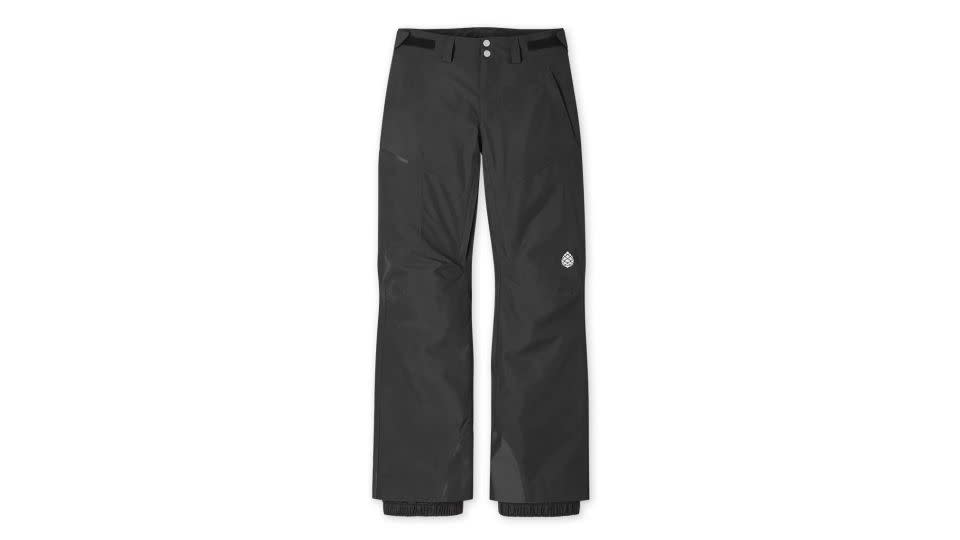
Stio opted for PrimaLoft Silver, a synthetic insulation made from 100% recycled polyester. This keeps skiers toasty while running laps, but the thigh vents allow for enough breathability that you won’t swelter.
Marmot Precip Eco Men’s Jacket
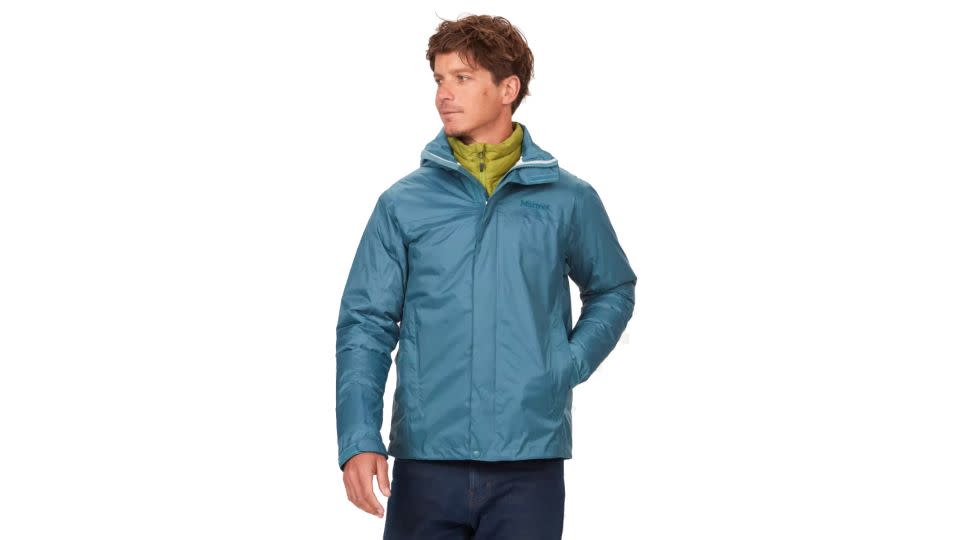
A lot of the new PFAS-free products are expensive, so it’s refreshing to find a rain jacket that almost dips below $100. Marmot uses a microporous technology that lets body heat out without allowing moisture to penetrate.
Marmot Precip Eco Women’s Jacket
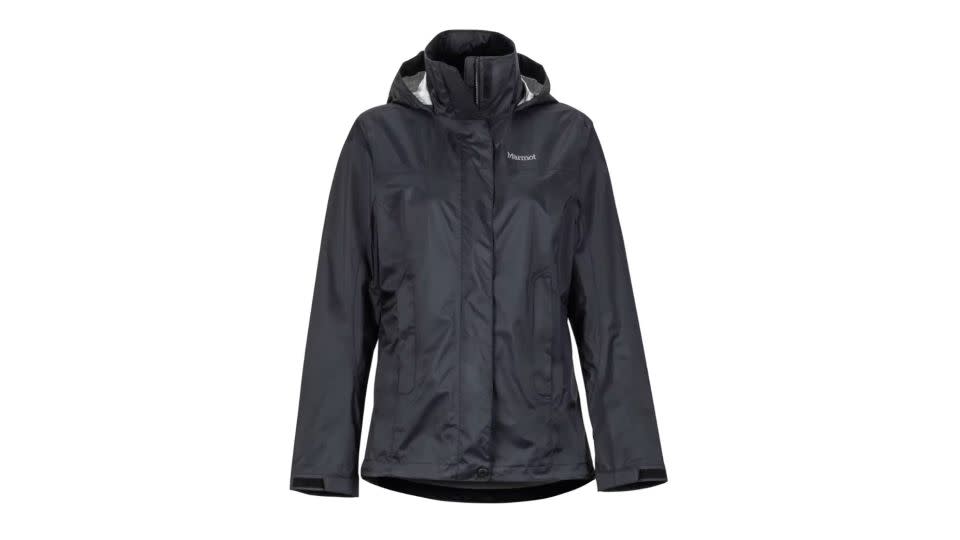
The PreCip Eco is very packable and stuffs inside its own pocket, so you can easily toss it in your backpack. A stowable hood and pit zips round out the basic features. And of course, the whole thing is PFC-free.
Keen Women’s Targhee IV Waterproof Hiking Shoe
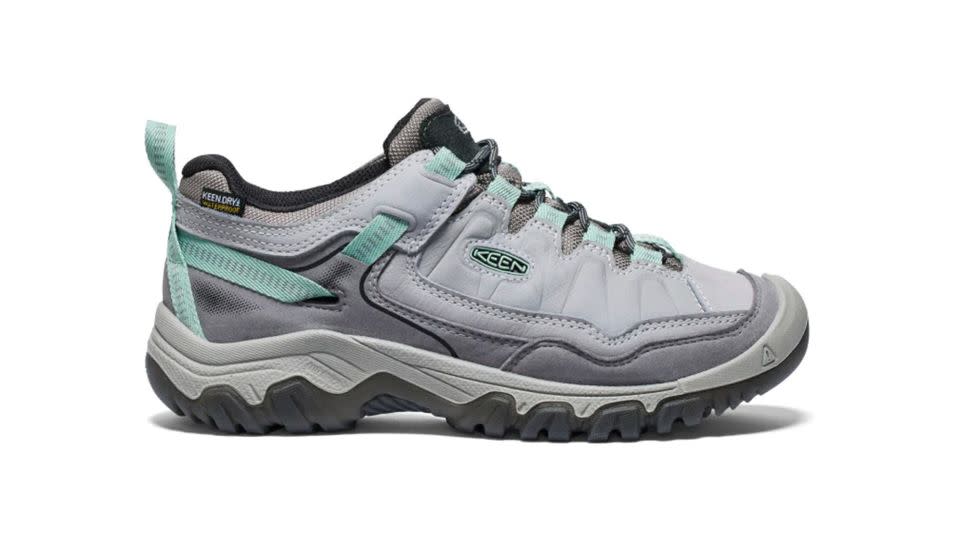
Keen ditched PFAS in 2018, so you don’t have to cull through the site wondering which ones are good. The Targhee IV is a perennial favorite, thanks to its generous fit and all-around durability that withstands anything the trail throws at you.
Keen Men’s Targhee IV Waterproof Hiking Shoe
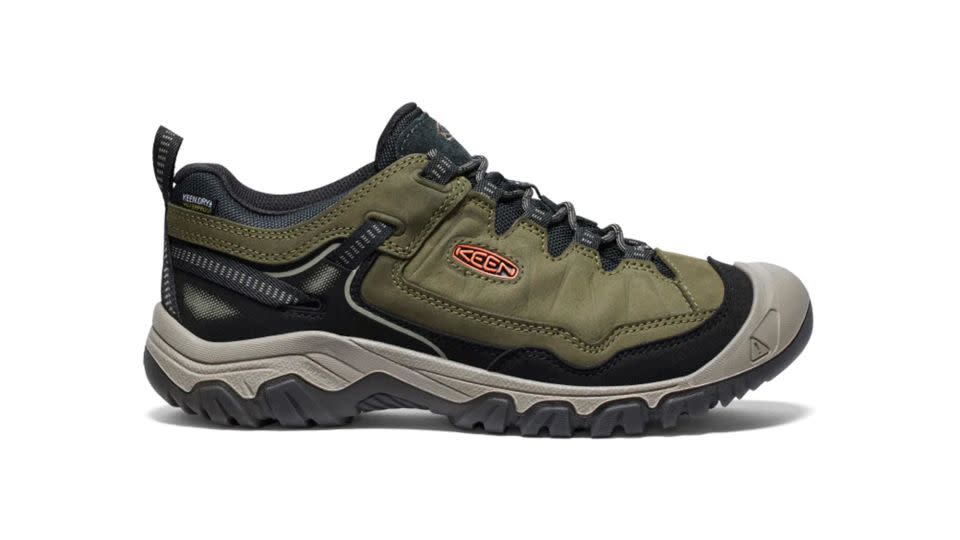
Keen fuses the uppers to the soles instead of using chemically laden glues. The leather comes from a certified tannery and synthetic components come from recycled plastic bottles. If you hate them, you’ve got 30 days to return them, no questions asked.
Note: The prices above reflect the retailers' listed price at the time of publication.
For more CNN news and newsletters create an account at CNN.com

